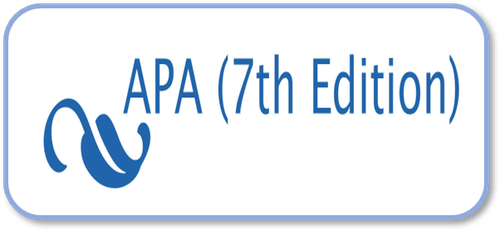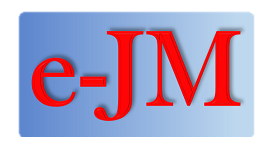Economic And Asymmetric Information As Moderation Variables, Credit Risk And Credit Prices
DOI:
https://doi.org/10.24912/jm.v28i1.1636Abstract
Profitability denotes a company's capacity to generate earnings within a specified timeframe. Companies that thrive and exhibit profitability are perceived as successful and typically garner favour among shareholders. This study examines profitability in the context of a company's ability to generate earnings within a specified timeframe, which is crucial for shareholder favour and business success. It focuses on the banking sector in Indonesia, encompassing 33 listed entities, with eight selected for the research sample. Employing hypothesis testing and analytical techniques, the study finds that asymmetric information and fluctuations in profitability do not affect credit pricing. Instead, credit risk positively impacts credit pricing, along with positive contributions from asymmetric information and profitability. This suggests that profitability does not hinder creditworthiness improvements. Asymmetric information does not affect credit pricing, making selling bank loans risky. Further research on credit pricing at a larger scale is warranted.
References
Agarwal, C. (2022). Information Asymmetry, Line Of Credit And Term Loan Pricing. SSRN Electronic Journal. https://doi.org/10.2139/ssrn.3998005.
Anagnostopoulou, S. C., & Tsekrekos, A. E. (2017). The Effect Of Financial Leverage On Real And Accrual-Based Earnings Management. Accounting and Business Research, 47(2), 191–236. https://doi.org/10.1080/00014788.2016.1204217.
Anastasiia Petruk, & Roman Stadniichuk. (2020). Credit Derivatives In Banking: Benefits And Threats. European Cooperation, 3(47). https://doi.org/10.32070/ec.v3i47.85.
Ardiyani, N. K. W., & Yadnyana, I. K. (2023). Jumlah Kredit Dan Suku Bunga Terhadap Profitabilitas Dengan Kualitas Kredit Sebagai Pemoderasi. E-Jurnal Akuntansi, 33(1). https://doi.org/10.24843/eja.2023.v33.i01.p13.
Atmojo, M. F. S. (2021). Pengaruh Capital Adequacy Ratio, Biaya Operasional Pendapatan Operasional Dan Net Operational Margin Terhadap Financing To Deposit Ratio Pada Bank Umum Syariah Di Indonesia Tahun 2016-2018. Jurnal Riset Ilmu Ekonomi Dan Bisnis, 1(1), 34–40. https://doi.org/10.29313/jrieb.v1i1.69.
Awaya, Y., Fukai, H., & Watanabe, M. (2017). A Model Of Collateral. In SSRN Electronic Journal. Elsevier BV. https://doi.org/10.2139/ssrn.3049303.
Beck, T., Ioannidou, V., & Schäfer, L. (2018). Foreigners Vs. Natives: Bank Lending Technologies And Loan Pricing. Management Science, 64(8). https://doi.org/10.1287/mnsc.2016.2706.
Blanco-Oliver, A., Reguera-Alvarado, N., & Veronesi, G. (2021). Credit Risk In The Microfinance Industry: The Role Of Gender Affinity. Journal of Small Business Management, 59(2), 280–311. https://doi.org/10.1080/00472778.2020.1844487.
Bryan, J., Marciano, D., Ernawati, E., & Bartle, J. (2022). Factors Affecting Syndicated Loan Spreads In Indonesia, Thailand, And Vietnam. 19th International Symposium on Management (INSYMA 2022), 108–117. https://doi.org/10.2991/978-94-6463-008-4_15.
Cai, Z., Luan, X., & Li, Z. (2019). Corporate Leverage From The Perspective Of Return On Assets—Two-Level Deviations Of Macro And Micro Leverage Ratios. In Research Series on the Chinese Dream and China's Development Path (51–72). Springer Singapore. https://doi.org/10.1007/978-981-13-5752-7_3.
Chowdhury, M. A. R. (2021). Credit and Liquidity Risk Assessment of NCC Bank: A Correlational Analysis. Research Square Platform LLC. https://doi.org/10.21203/rs.3.rs-1197595/v1.
Chung, T. A., & Phan, Q. T. (2020). Debt Maturity And The Development Of Financial Markets In Vietnamese Listed Firms. Afro-Asian Journal of Finance and Accounting, 10(2), 184–206. https://doi.org/10.1504/AAJFA.2020.106258.
Cui, J., Jo, H., & Na, H. (2018). Does Corporate Social Responsibility Affect Information Asymmetry? Journal of Business Ethics, 148, 549–572. https://doi.org/10.1007/s10551-015-3003-8.
D. D. Yessenaman, L. M. Alimzhanova, & A. K. Sarbasova. (2023). Modelling Software For An Effective Banking Scoring System. Bulletin of Toraighyrov University. Physics & Mathematics Series, 1.2023. https://doi.org/10.48081/egvg4566.
Diaz-Serrano, L., & Sackey, F. G. (2018). Microfinance And Credit Rationing: Does The Microfinance Type Matter? Journal of Sustainable Finance & Investment, 8(2), 114–131. https://doi.org/10.1080/20430795.2017.1403181.
Fang, S., Qian, X., & Zou, W. (2020). The Empirical Relation Between Loan Risk And Collateral In The Shadow Banking System: Evidence From China’s Entrusted Loan Market. International Review of Economics and Finance, 67. https://doi.org/10.1016/j.iref.2019.12.012.
Gadzo, S. G., & Asiamah, S. K. (2018). Assessment Of The Relationship Between Leverage And Performance: An Empirical Study Of Unlisted Banks In Ghana. Journal of Economics and International Finance, 10(10), 123–133. https://doi.org/10.5897/jeif2018.0920.
Gadzo, S. G., Kportorgbi, H. K., & Gatsi, J. G. (2019). Credit Risk And Operational Risk On The Financial Performance Of Universal Banks In Ghana: A Partial Least Squared Structural Equation Model (PLS-SEM) Approach. Cogent Economics & Finance, 7(1), 1589406. https://doi.org/10.1080/23322039.2019.1589406.
García, F. J. P. (2017). Credit Risk: Measurement. Financial Risk Management. 201-234, Springer International Publishing. https://doi.org/10.1007/978-3-319-41366-2_9
Glazkova, G., & Hanova, L. (2022). Credit Risk Assessment During the Audit of Commercial Bank Statements. Auditor, 8(1). https://doi.org/10.12737/1998-0701-2022-8-1-48-54
Godlewski, C., & Weill, L. (2021). Are Loans Cheaper When Tomorrow Seems Further? Economic Modelling, 94, 1058–1065. https://doi.org/10.1016/j.econmod.2020.02.046.
Gupta, A., & Hansman, C. (2022). Selection, Leverage, And Default In The Mortgage Market. Review of Financial Studies, 35(2), 720-770. https://doi.org/10.1093/rfs/hhab052.
Hair, J. F., Risher, J. J., Sarstedt, M., & Ringle, C. M. (2019). When To Use And How To Report The Results Of PLS-SEM. European Business Review, 26(2), 106–121. https://doi.org/10.1108/EBR-10-2013-0128.
Hayunga, D. K., Pace, R. K., & Zhu, S. (2019). Borrower Risk And Housing Price Appreciation. The Journal of Real Estate Finance and Economics, 58, 544-566. https://doi.org/10.1007/s11146-018-9669-9.
Hendricks, K. B., Jacobs, B. W., & Singhal, V. R. (2020). Stock Market Reaction To Supply Chain Disruptions From The 2011 Great East Japan Earthquake. Manufacturing & Service Operations Management, 22(4), 683–699. https://doi.org/10.1287/msom.2019.0777.
Ibrahimov, Z., Hajiyeva, S., Nazarov, V., Mazanov, A., & Baghirov, J. (2022). Quality And Innovations In The Financial Reporting As A Way To Increase Attractiveness For Institutional Investors. Marketing and Management of Innovations, 2(1). https://doi.org/10.21272/mmi.2022.2-22.
Ilmi, M. F. (2017). Pengaruh Kurs/Nilai Tukar Rupiah, Inflasi Dan Tingkat Suku Bunga SBI Terhadap Indeks Harga Saham Gabungan LQ-45 Periode Tahun 2009-2013. Nominal Barometer Riset Akuntansi Dan Manajemen, 6(1), 93–108. https://doi.org/10.21831/nominal.v6i1.14335.
Janudin, J., & Septiningrum, L. D. (2021). Upaya Meningkatkan Kinerja Perusahaan Melalui Efektivitas Aktivitas Bisnis, Tata Kelola, Dan Optimalisasi Profit. Scientific Journal Of Reflection : Economic, Accounting, Management and Business, 4(2). https://doi.org/10.37481/sjr.v4i2.292.
Jensen, M., & Meckling, W. (1976). Theory Of The Firm: Managerial Behaviour, Agency Costs, And Ownership Structure. The Economic Nature of the Firm: A Reader, Third Edition, 283–303. https://doi.org/10.1017/CBO9780511817410.023.
Jiang, F., Qi, X., & Tang, G. (2018). Q-Theory, Mispricing, And Profitability Premium: Evidence From China. Journal of Banking & Finance, 87, 135–149. https://doi.org/10.1016/j.jbankfin.2017.10.001.
Kasmir. (2017). Manajemen Perbankan. (1st–7th ed.). Jakarta: PT Raja.
Kawai, K., Onishi, K., & Uetake, K. (2022). Signalling In Online Credit Markets. Journal of Political Economy, 130(6), 1585–1629. https://doi.org/10.1086/718984.
Kestenbaum, B., & Kestenbaum, B. (2019). Population, Exposure, And Outcome. Epidemiology and Biostatistics: Practice Problem Workbook, 5–6. https://doi.org/10.1007/978-3-319-97433-0_2.
Khalfaoui, H., & Derbali, A. (2021). Money Creation Process, Banking Performance And Economic Policy Uncertainty: Evidence From Tunisian Listed Banks. International Journal of Social Economics, 48(8), 1175–1190. https://doi.org/10.1108/IJSE-12-2020-0784.
Li, X., Feng, H., Zhao, S., & Carter, D. A. (2021). The Effect Of Revenue Diversification On Bank Profitability And Risk During The COVID-19 Pandemic. Finance Research Letters, 43, 101957. https://doi.org/10.1016/j.frl.2021.101957.
Lu, J., & Boateng, A. (2018). Board Composition, Monitoring And Credit Risk: Evidence From The UK Banking Industry. Review of Quantitative Finance and Accounting, 51, 1107–1128. https://doi.org/10.1007/s11156-017-0698-x.
Maleki Mehr, A. (2020). Investigating The Relationship Between Earnings Management, Information Disclosure And Information Asymmetry In The Listed Companies In The Tehran Stock Exchange. Journal of Management and Accounting Studies, 8(1). https://doi.org/10.24200/jmas.vol8iss1pp9-14.
Martín-Oliver, A., Ruano, S., & Salas-Fumás, V. (2020). How Does Bank Competition Affect Credit Risk? Evidence From Loan-Level Data. Economics Letters, 196, 109524. https://doi.org/10.1016/j.econlet.2020.109524.
Mei, C. L., Nsiah, T. K., Barfi, R., & Bonsu, M. O.-A. (2019). Credit Risk And Bank Profitability Of Commercial Banks In Ghana. EPRA International Journal of Research & Development (IJRD), 4(12). https://doi.org/10.36713/epra3836.
Rinjani, T. P. C. (2022). Analysis Of Risk Profile, Good Corporate Governance, Earnings, Capital: Health Calculation Method At Bank Perkreditan Rakyat: (Study On PT. BPR Bank Bapas 69 Perseroda Magelang Regency and its Industrial Average in 2018-2020). CASHFLOW: Current Advanced Research on Sharia Finance and Economic Worldwide, 2(1), 164–174. https://doi.org/10.55047/cashflow.v2i1.454.
Rose, C. (2017). The Relationship Between Corporate Governance Characteristics And Credit Risk Exposure In Banks: Implications For Financial Regulation. European Journal of Law and Economics, 43, 167–194. https://doi.org/10.1007/s10657-016-9535-2.
Rustimulya, G. S., & Muchtar, S. (2019). Determinants Of Liquidity Risk In Banking Sector On The Indonesia Stock Exchange. Jurnal Manajemen, 23(3). https://doi.org/10.24912/jm.v23i3.583.
Sari, L., Tanno, A., & Putri, A. (2020). Peran NPL Terhadap Hubungan Antara LDR Dan Kinerja Perusahaan (Study Empiris Pada Bank BUMN yang Terdaftar di BEI). Jurnal Ilmiah Administrasi Bisnis Dan Inovasi, 3(2), 133. https://doi.org/10.25139/jai.v3i2.2081.
Su, X., & Zhang, L. (2017). A Reexamination Of Credit Rationing In The Stiglitz And Weiss Model. Journal of Money, Credit and Banking, 49(5), 1059–1072. https://doi.org/10.1111/jmcb.12406.
Sugiyono. (2017). Metode Penelitian Pendidikan Pendekatan Kuantitatif, Kualitatif, dan R dan D. PT Alfabeta.
Tchamyou, V. S., Asongu, S. A., & C. Nwachukwu, J. (2018). Effects Of Asymmetric Information On Market Timing In The Mutual Fund Industry. International Journal of Managerial Finance, 14(5), 542–557. https://doi.org/10.1108/IJMF-09-2017-0187.
Terovitis, S. (2018). The Impact Of Credit Ratings On Capital Markets. SSRN Electronic Journal. https://doi.org/10.2139/ssrn.3260650.
Thai, N. H., Phuong, D. N., & Hong, N. T. (2021). The Relation Between Information Asymmetry And Firm Value: Empirical Evidence From Vietnamese Listed Firms. VNU Journal Of Economics And Business, 1(4). https://doi.org/10.25073/2588-1108/vnueab.4647.
Thakor, A. V. (2020). Fintech And Banking: What Do We Know? Journal of Financial Intermediation, 41. https://doi.org/10.1016/j.jfi.2019.100833.
Toumi, K. (2020). Islamic Ethics, Capital Structure And Profitability Of Banks; What Makes Islamic Banks Different? International Journal of Islamic and Middle Eastern Finance and Management, 13(1), 116–134. https://doi.org/10.1108/IMEFM-05-2016-0061.
Tunay, K. B., Yuceyılmaz, H. F., & Çilesiz, A. (2020). An International Comparison on Excessive Credit Expansion, Credit Guarantee Programs and The Risks Arising. Khazar Journal of Humanities and Social Sciences, 23(1). https://doi.org/10.5782/2223-2621.2020.23.1.83.
Utzig, K. J. (2020). An Examination of Corporate Financial Performance within Corporate Socially Responsible Standard & Poor 500 Companies [Walden University]. https://scholarworks.waldenu.edu/cgi/viewcontent.cgi?article=10274&context=dissertations.
Vitolla, F., Raimo, N., & Rubino, M. (2020). Board Characteristics And Integrated Reporting Quality: An Agency Theory Perspective. Corporate Social Responsibility and Environmental Management, 27(2), 1152–1163. https://doi.org/10.1002/csr.1879.
Walke, A. G., Fullerton Jr, T. M., & Tokle, R. J. (2018). Risk-Based Loan Pricing Consequences For Credit Unions. Journal of Empirical Finance, 47, 105–119. https://doi.org/10.1016/j.jempfin.2018.02.006.
Wijaya, I. F., & Moro, A. (2022). Trustworthiness And Margins In Islamic Small Business Financing: Evidence From Indonesia. Borsa Istanbul Review. https://doi.org/10.1016/j.bir.2022.10.010.
Yudisthira, E., & Barthos, M. (2022). Key Factors And Legal Obstacles In Banking Loan Approval. In Proceedings of the First Multidiscipline International Conference, MIC 2021, October 30 2021, Jakarta, Indonesia. https://doi.org/10.4108/eai.30-10-2021.2315743.
Yunanto, Y., Suhariadi, F., & Yulianti, P. (2019). Analisis Rasio Keuangan Perbankan Terhadap Profitabilitas. E-Jurnal Akuntansi, 29(2). https://doi.org/10.24843/eja.2019.v29.i02.p17.
Zhou, Q., Lim, F. J., Yu, H., Xu, G., Ren, X., Liu, D., Wang, X., Mai, X., & Xu, H. (2021). A Study On Factors Affecting Service Quality And Loyalty Intention In Mobile Banking. Journal of Retailing and Consumer Services, 60, 102424. https://doi.org/10.1016/j.jretconser.2020.102424.
Downloads
Published
How to Cite
Issue
Section
License
Copyright (c) 2024 Jurnal Manajemen

This work is licensed under a Creative Commons Attribution-NonCommercial-ShareAlike 4.0 International License.
This journal provides immediate open access to its content on the principle that making research freely available to the public supports a greater global exchange of knowledge.

This work is licensed under a Creative Commons Attribution-NonCommercial-ShareAlike 4.0 International License



















